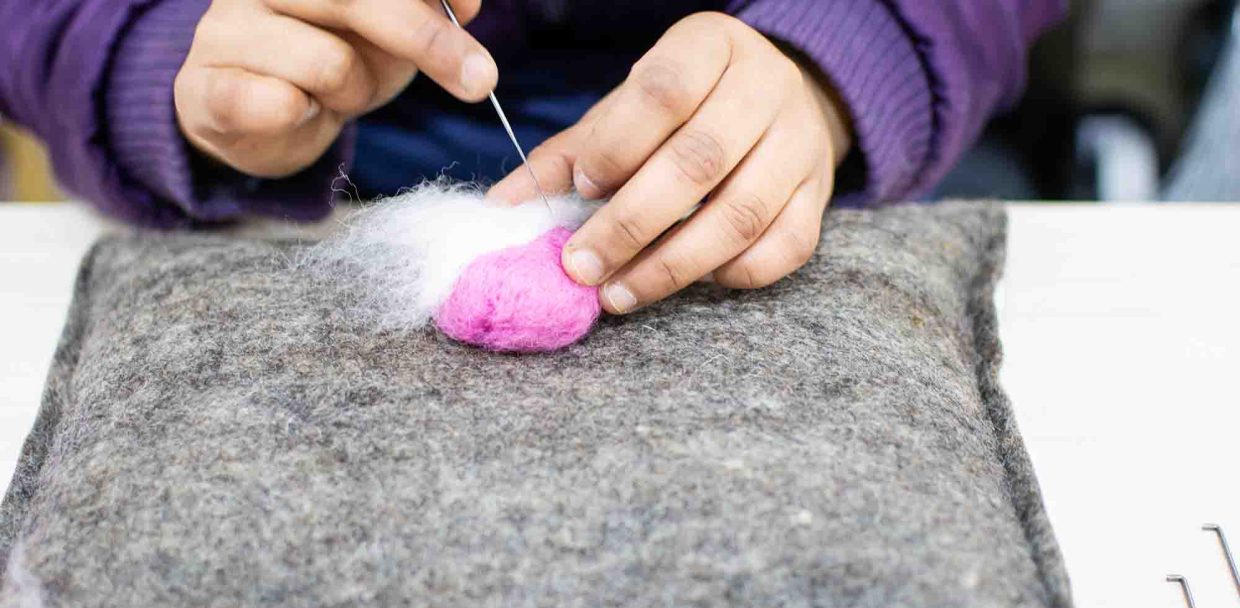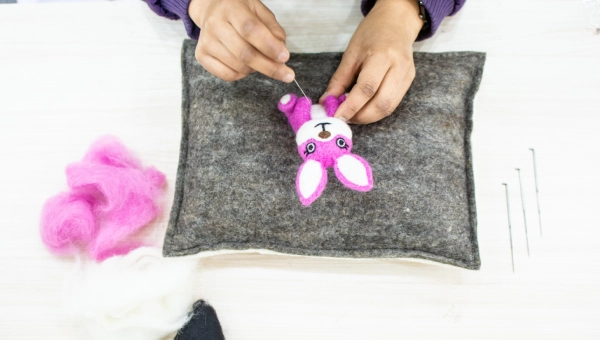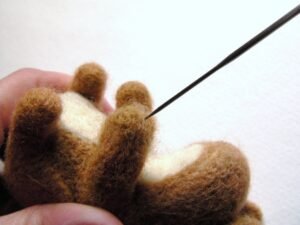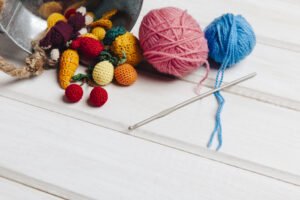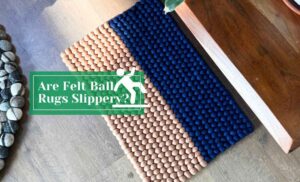Needle felting is a fun hobby. You can be creative as much as you want. You can explore your creative mind and enhance your brain creativity. You can start with the basic felting projects and keep on increasing the difficulty level of the projects.
Needle felting can be quite bewildering at the beginning. You can easily make minor mistakes which can make the job difficult. Since we will be using a needle for felting, you are prone to mistakes. As the saying ‘Prevention is better than cure, it is better to be aware of the mistakes that can happen rather than being sorry.
Here we are going to talk about common needle felting mistakes that can happen during felting. Don’t worry we are also going to talk about the solution to those problems.
Common Needle felting Mistakes
Here we have listed the common mistakes that can arise when felting.
Forgetting to use a felting cushion
When you are a beginner, you don’t usually have the habit of using the materials to their full use. So you might forget to use the felting cushion when felting. You might also think that it’s not necessary. The worst part of all, you may use your hand or your lap as a felting surface. This can injure you badly. So you see felting a surface or a cushion is crucial for felting.
We recommend you get a felting surface, if not why not make one yourself. You can use old unwanted cloth and make them a ball to be used as a felting surface. Do not forget to place the felting surface before any poking. Why not write yourself a note as things to remember when felting. This can help you remember to use it and in a few tries, you will get used to using the felting surface.
Using an incorrect sized needle
There are different types of felting needles available in the market. They come with different barbed ends also. The gauge differs depending on the texture or the size of wool you are using. If you are working with fine wool then we recommend you to use a needle with a higher gauge but if you are working with coarser wool then we recommend you to use a needle with a lesser gauge.
Using the right-sized needle is crucial for felting. For example, if you use a felting needle for finer wool to felt coarse wool then the needle can break apart or won’t felt easy. It can be said the same if you are using needles for coarser wool to felt finer wool.
Stabbing deep into the wool
Many people have this wrong idea that if they poke the needle deep when felting then it felts strong and fast. The result is opposite to what they expected. This uses more time to feel and you also waste your energy. You can also break the needle if you use excessive pressure. You also don’t get smooth and uniform felted results on your projects.
We recommend you to short stab when you are felting. This way the wool felts a lot faster and they are also uniformly felted giving you a smooth finish.
Focusing on only one area at a time
Sometimes when we are felting we want to give our best and make the mistake of focusing only on one area when felting. We might be wondering to cover one area at a time but that’s a no-no in the felting process. You need to felt evenly around the project and let it take its shape all over. This helps achieve an even finish. It also helps to give us an idea of how much wool is needed.
Choosing a difficult project as a beginner
We do enjoy ourselves a challenge. So as a beginner we make the mistake of choosing a difficult project. The projects can be interesting and fun at the beginning but due to a lack of skill, you won’t be able to complete the most of the time. This makes you demotivated and might make you lose interest in felting before starting.
So why not start with a simple project. They are easy for beginners and can play a vital role in enhancing your skill. As you keep on doing different felting projects, you can increase the difficulty of your projects. So choose a simple felting project for beginners.
Felting with the wrong wool
There are hundreds of options of wool to choose from when felting. Different varsities of wool of different colors and textures can be found. Choosing the right one for felting can be sometimes mind-boggling. There is wool which is not great for felting. Let’s take superwash wool, for example, they are designed for knitting and have lost the properties for shrinking when in contact with heat. So it is not an option for felting.
Why not be educated regarding different types of wool. You can know from your local seller whether the wool that you are eyeing felts or not. You can also ask for some recommendations.
Joining complete pieces
When you are felting a 3D project or a project that requires different pieces together you might felt them one at a time. You felt the pieces completely then when the time comes for joining them then you may notice that it is difficult to join them together. It doesn’t mean that you cannot join different shaped felted pieces together. There is a way to do so.
When felting each piece leave the joining end unfinished. The loose fibers on the end of joining pieces are then felted together. This the pieces are joined more easily and strongly.
Not understanding when felting is complete
As a beginner, you might be unable to figure out when the piece is well made. This can lead to under felting or over felting. We recommend you follow the sticking method. Place the project between your two-finger and squeeze it. If the project is dense enough to maintain its shape after squeezing then it is completed. But it doesn’t retain the shape then we felt until it is dense.
Not using the right amount of wool
It is crucial to know the amount of wool required for felting. As a beginner, it is difficult to allocate how much wool is needed. So you might use too little or too much wool which leads to a bad felting job. If the wool is too little then the needle may pass through the wool easily making it impossible to feel. If you use too much wool then the needle might break when felting and it won’t feel the inner part nicely.
So at the beginning of felting take amount enough to stop the needle from passing through but felts easily. You can keep on adding thin layers of wool until desired size and shape are made. This way is better than taking a large amount of wool at once.
Not using a needle in the correct motion
The felting needle is thin and can break easily. When using excessive pressure or rough movements while felting can break your needles. We recommend you use a needle in an up and down or horizontal motion. This prevents the needle from being stuck in the fibers of the wool and breaking. Do not try to rush the process by stabbing quickly either. Use the needle with precise control.
Remember,
If you are just starting to needle felt and looking for ways to improve your skill then you should be aware of the mistakes that can happen. This way you can prevent them and learn it quickly. It’s not so easy to prevent these mistakes but with time you will get hang of it. So felt continuous, and enhance your skill. Use your creativity to your full potential and enjoy felting.

